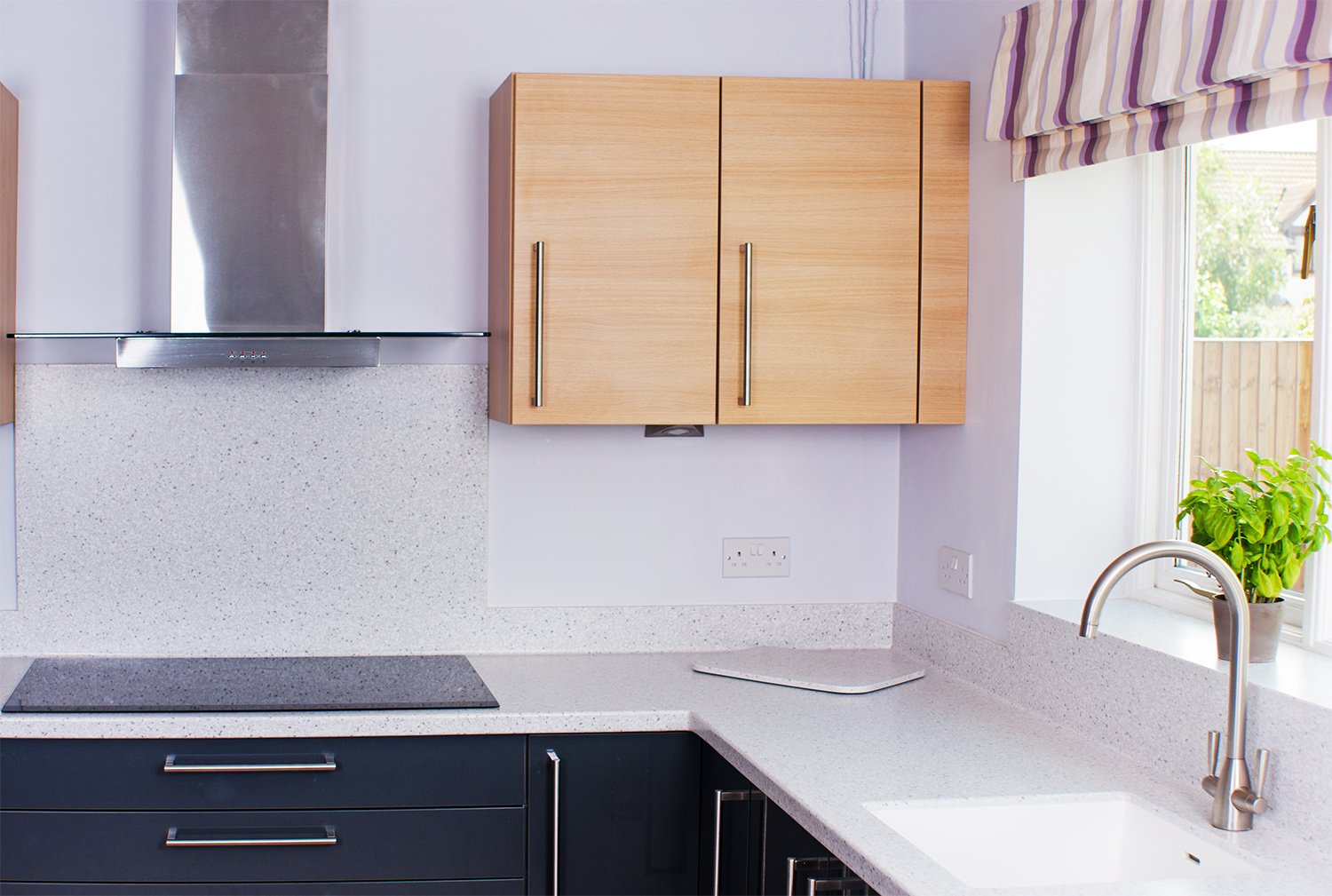You can clean and remove stains on marble, tile, wood, stainless steel, granite, and other kitchen or bathroom countertop surfaces easily and safely. Knowing how to keep surfaces spotless and prevent stains helps countertops look better and last longer, and it keeps your kitchen or bath looking clean overall. This is a DIY project, unless countertops have been damaged, in which case bringing in a pro might be necessary.
Why Should You Care for Your Countertops
Your countertops play a huge role in your kitchen or bathroom; it’s where you prep food, store useful tools and appliances, or get ready for the day. Not to mention, they can also add value to your home. Keep your countertops looking new and give them the TLC they need to last with these cleaning tips.
Each type of countertop requires a specific cleaning method, stain removal strategy, and sealing process to get your maintenance done. Get rid of stains and prevent marks and scratches to keep your kitchen and bathroom looking snazzy for years to come.
How to Clean and Remove Stains From Countertops
Knowing which types of counters you have is essential to identifying the best ways to clean them and avoiding damaging the material. Next, have the right cleaning supplies and tools on hand. For example, you can use lemon juice and baking soda to remove stains from stainless steel, but lemon juice can cause damage natural stones like marble.
If you’re unsure how to clean your countertop, ask the manufacturer or contractor who installed them. The following steps detail cleaning, removing stains, and sealing the most common countertops.
Granite Countertops
Granite is a popular countertop choice because it’s 100% natural, durable, and comes in hundreds of colors. With the proper maintenance, it will look great for many years.
Here’s how to clean granite countertops:
1. Clean
Wipe and rinse with warm, soapy water. Avoid abrasive cleansers that may cause scratches. Fixing bleach stains on granite can be tricky, so avoid this cleaning method as well.
2. Stain Removal
To remove stains, apply a baking soda paste, cover it with plastic wrap, and then let it sit overnight. Wipe up with warm water and a soft cloth.
3. Seal
Use the water droplet test to determine when to reseal. Leave a few drops of water on your counter. If the droplet stays on the surface after 15 minutes, no resealing is needed. If the drops spread and leave a dark mark on the stone after you blot off the excess, apply a product formulated for stone.
Marble Countertops
Marble counters are unique, heat resistant, and durable. Once sealed, they are stain-resistant, and because marble is a natural stone, it’s resistant to scratching and cracking. However, spills still need to be wiped up quickly, especially if it’s a mislaid juice box or glass of wine, because marble is quite porous.
Here’s how to clean marble countertops:
1. Clean
Wipe with a damp, soft cloth and then dry with a clean cloth to prevent streaking and water spots from forming. Use pH-neutral dishwashing liquid mixed with warm water for deeper cleans.
2. Stain Removal
To avoid stains, immediately blot acidic liquids such as wine, orange juice, tomato, or soft drinks, as they can permanently etch marble surfaces. Etched marble may require professional buffing.
3. Seal
Use the water droplet test as described for granite to determine if the counter needs to be resealed. If it fails, use a product formulated for marble’s porous surface.













